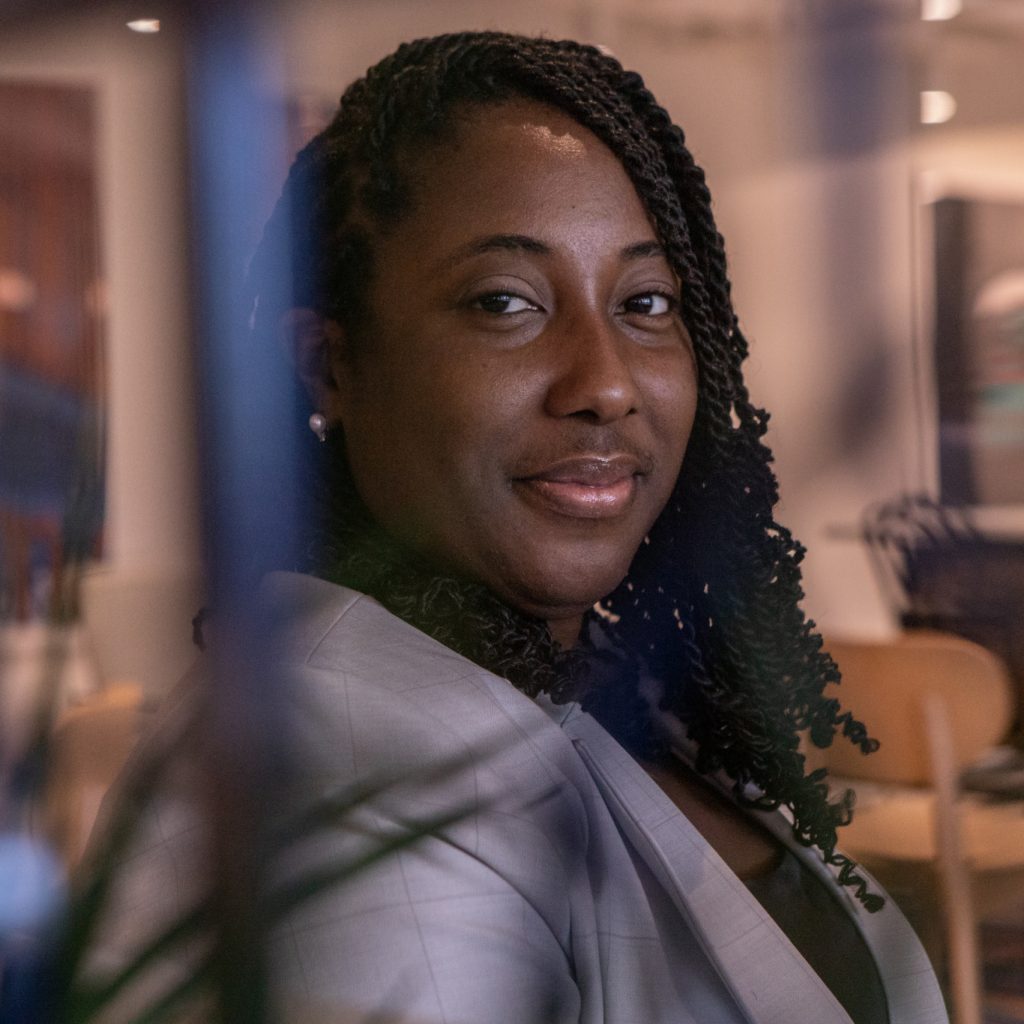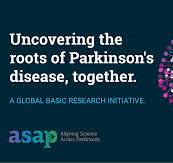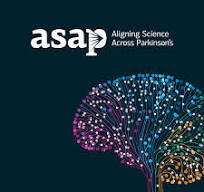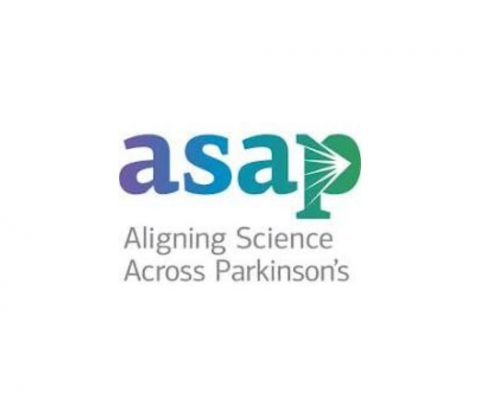
As part of the Demoucelle Parkinson Charity’s effort to accelerate research to find a cure for Parkinson’s disease and to better understand the important role that philanthropists and the charitable sector play in achieving this goal, Anne-Marie contacted Ekemini Riley, Managing Director of the Aligning Science Across Parkinson’s (ASAP) initiative, one of the biggest funders of Parkinson’s research in the world.
Funded by the family foundation of Google co-founder Sergey Brin, whose mother has Parkinson’s and who himself has a genetic risk factor for Parkinson’s, ASAP is a coordinated research initiative focused on understanding the underlying science of Parkinson’s disease with the goal of accelerating discoveries. Established in 2019, the initiative makes large, long-term commitments; is prepared to support studies that might otherwise not be funded; and believes in fostering a collaborative and open approach to research.
ASAP works with The Michael J. Fox Foundation to implement its five programs, which help to fuel mechanistic research and enable biomarker studies.
To read a December 2023 Bloomberg article about Parkinson’s research and ASAP, please click here.
———————–
Why was ASAP established?
The Sergey Brin Family Foundation (SBFF) had an interest in the Parkinson’s Disease (PD) field, given the opportunity to help many more people living with Parkinson’s. Our approach has been to support the incredible work already being done and to fill in gaps in discovery science to ensure that a healthy pipeline of ideas and treatments is flowing from basic science to industry research and discovery (R&D).
 What does ASAP do?
What does ASAP do?
Our mission is to accelerate the pace of discovery and inform the path to a cure for PD through collaboration, research-enabling resources, and data sharing. We aim to achieve this through the major programs we support under the ASAP umbrella.
It is important to know that ASAP is a philanthropically funded initiative, and we primarily seek to collaborate with existing partners in the space to avoid duplicating efforts.
When it comes to deciding how we should invest ASAP’s philanthropic resources, there are a few major questions we initially ask ourselves to identify subject areas within the PD space that we might fund. For example, we ask whether there are gaps that still exist in the PD field, why those gaps exist, and if there are resources or foundational knowledge missing that would support filling the gap.
What distinguishes ASAP from other organizations?
We prefer to consider how we can be complementary to other approaches going on in the field to accelerate discovery and collectively push forward. The key features of the approach we bring to the table include, but are not limited to:
- Appetite for risk
- Large-scale funding with global reach
- Deep commitment to open science
- Targeted focus
- Flexible and adaptable
What’s the link between ASAP and the Michael J. Fox Foundation for Parkinson’s Research?
The Michael J. Fox Foundation (MJFF) has been a key collaborator and partner for ASAP since its inception. MJFF has worked in parallel with ASAP to complement its programs. We work with MJFF closely on grantmaking and scientific infrastructure to process proposals, issue grants, and steward key scientific teams. Beyond grantmaking, we are supporting the expansion of the Parkinson’s Progression Markers Initiative (PPMI), MJFF’s landmark study.
How do you and your team characterize the state of Parkinson’s research?
It is quite the time to be involved in PD research! Just in the past year alone, the field has seen the following discoveries enabled by ASAP’s support:
- a new variant in the GBA1 gene – One that increases the risk of PD in people of African descent, and that is not seen in those with European ancestry, thus highlighting the importance of including multiple ancestries in genetics research).
- a new biomarker (the synuclein aggregation assay [SAA]) – this is a huge step forward as this biomarker confirms synuclein pathology in living individuals, for which there was previously no method. Patient stratification seems within reach.
- a new proposed disease staging paradigm – which seeks to move the field toward a biological definition of disease (akin to the oncology field).
While there have been several exciting discoveries (which should really engender some real hope!), there is always more to learn. We still haven’t identified:
- Methods to slow progression
- Methods to prevent disease onset – the field is able to identify at-risk populations, however, we also need mechanisms to prevent disease onset
- A cure (or “cures” depending on how the definition of PD evolves!)
How do you see the path from cutting-edge laboratory research to achieving the goal of new therapies (and even a cure) for PD?
In general, the path to a therapeutic treatment or a cure is a long one, filled with years of iterative discovery from preclinical through clinical stage research and trials. With the advent of a new staging approach to PD, the field could be in for a paradigm shift as efforts to define the disease biologically (as opposed to solely clinical observation) will open up different avenues for treatment windows, patient stratification, targeted therapies, and more.
 How important is the role of philanthropy in promoting/ supporting research? Why is it needed? What are the benefits? The challenges?
How important is the role of philanthropy in promoting/ supporting research? Why is it needed? What are the benefits? The challenges?
When deployed strategically, philanthropic capital can be a catalytic force for seeking solutions, filling gaps, and taking risks with the intent to transform whatever field into which it is injected.
At ASAP, we are benefited by the ability to think holistically about the field, taking on resource generation that can be leveraged by many, supporting the exploration of several hypotheses to avoid over-dependence on any one school of thought and encourage diversity of ideas, and supporting early career investigators and incentivizing those from other disciplines to devote their time and research effort to PD, to name a few.
However, deploying philanthropic dollars is not without its challenges, namely in trying not to reinvent the wheel. At ASAP, we conducted a deep gap analysis to understand where the needs are, as well as understand when an area has matured to the point where other sustainable sources can take on the work.
What advice would you give to people wanting to support Parkinson’s research?
Identify a few of your top priorities/outcomes you would like to see and align with organizations that are working towards similar goals. It is clear that it will take the entire community to solve the complex challenges of neurodegeneration broadly and PD specifically, so think about ways to leverage existing resources (or create a nonexistent resource) to amplify the potential impact of ongoing activities.
Other tangible ways to make a difference: Those who are not actively in a lab or who may not be able to fund an initiative are still able to help; remember, a little goes a long way if we all work together. Key examples:
- Join a clinical research study – whether you are a person with Parkinson’s or a “control,” the research can only be as rich as the participants in it. This type of contribution is invaluable.
- Contribute to a fundraising event (e.g., join a sponsored walk, run, etc.).
- Donate to PD foundations that fund research.
- Raise awareness – share your experiences and your voice to encourage others to participate and inform those who may not know how to get involved!
—————————————
Additional Background About ASAP
ASAP’s mission is to accelerate the pace of discovery and inform the path to a cure for PD through collaboration, research-enabling resources, and data sharing. In brief, ASAP programs are as follows:
- Collaborative Research Network (CRN) – this is the discovery research arm that is fostering an environment to facilitate the rapid and free exchange of scientific ideas in order to spark new discoveries for PD.
- Global Parkinson’s Genetics Program (GP2) – this is the genetics discovery arm that ensures ancestral diversity is included in PD-related genetic datasets to make PD genetics globally relevant.
- Parkinson’s Progression Markers Initiative (PPMI) – this is the biomarker discovery arm that is supporting worldwide strategies for investigating and defining biomarker signatures in the early stages of PD.
- iPSC Neurogenerative Disease Initiative for PD (iNDI-PD) – this is the cell resource arm that is making stem cell resources accessible to all researchers working on PD and drawing connections across diagnostic lines.
- Accelerated Medicine Partnership for PD (AMP PD) – this is a component of ASAP’ evolving data ecosystem that is a public-private partnership to harmonize PD datasets across the community.
